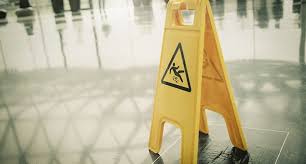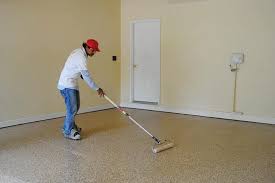Introduction
Concrete floors can be extremely slippery when wet or icy, especially in the winter. Slippery concrete can be extremely hazardous, resulting in accidents and injuries. When the concrete floor surface is color hardened, sealed, or polished, this problem is more likely to occur.
The coefficient of friction measures the slickness of a surface. As a result, increasing the coefficient of friction of the surface is required to increase slip resistance. Slip-resistant concrete surfaces are created using anti-slip paints, additives, or silica sand.
Ways to Make Slip-Resistant
You can use a variety of finishes to make newly poured concrete steps safer. Some of these are:
1. Slip-Resistant Sealer:
The first choice is to use a slip-resistant sealer. Penetrative sealers, which work beneath the surface rather than changing the texture of the surface, can be used. These sealers penetrate the pores and react with the surface beneath, strengthening it from the inside out. These sealers are naturally non-slippery because they do not change the surface from the outside. You can walk as confidently on the sealer coating as you would on the concrete. Use a non – absorbent sealer to reduce surface water absorption by up to 95%, making the surface resistant to snow, frost, rain, and other elements. You not only protect your family and guests from slip and fall accidents, but you also protect your concrete from normal weather-related wear and tear.
2. Better Concrete:
More importantly, if at all possible, try to focus on laying down the best quality concrete possible, so you don’t have to rely on a sealer as heavily to avoid a slip. A thin layer of sealer can be enough to prevent an accidental slip in your home if the concrete is durable and the paint job is thorough. A thin layer of sealer will also prevent plastic from accumulating, reducing the amount of decorative sealer and grit additives you must apply to your concrete surface. Remember that you’re using the sealer to help your concrete last longer. Ensure that the sealer does not cause the concrete to deteriorate.
3. Slip-Resistant Substances
If the sealer alone does not keep you from slipping, several non-slip additives are on the market, they are typically available in fine or coarse grades. Many people have discovered that incorporating elements such as aluminum oxide grit into the sealer makes a significant difference. The material is widely available and compatible with a wide range of sealers. The material is generally available and works well with a variety of sealers.

Fig 1: Wet floor signboard
Source: Slipnot.com
It comes in various colors, giving you a variety of options without compromising the appearance of your slippery concrete surface. The material is reasonably priced and can provide extensive coverage.
4. Silica Sand:
During the procedure, a layer of silica sand is applied over the first coat of fresh concrete sealer. The second coat of concrete sealer is applied and finished after the first coat has dried.
5. Muriatic or Hydrochloric Acid:
A 25% muriatic acid solution can etch and roughen slippery concrete. The Acid can eat away at the top layer of concrete, exposing the sand that has been mixed. As a result of this exposure, the concrete will have a slightly rough, sandpaper-like surface. Even when wet, it transforms slick concrete into a skid-resistant floor. Wear safety goggles, rubber gloves, and protective clothing in this method.

Fig 2: Solution being laid on the floor
Source: Andersonpaintingnc.com
6. Primer and paint
Slick concrete can be primed and repainted with grit additives added to the paint to make it non-slippery. Clear grit performs similarly to silica sand, but it does not contaminate your concrete sealer. The grit will, once again, be available where you purchase the concrete paint. Follow the recommended proportions and mix them into the paint. While sand and sawdust can be used as grit additives, a newer material sold specifically to make concrete less slippery is much lighter and mixes better with paint. As a result, you will find it much easier to work with these additives.
7. Color Hardener:
Color hardeners appear to be yet another effective method for contractors. Even if you don’t use the hardener, you’ll notice the significant benefit and extensive coverage it can provide. The color hardener does not appear as prominently on the surface as polymer grit. It is also far more durable than the sealer, which is critical because it must be lifted off when the additive wears out to prevent slip. This color hardener technique will not cause the same problem.
8. Non-Slip Strips:
This may not be the most visually beautiful method of making your concrete less slippery, but it is unquestionably the quickest and most effective. Non-slip strips that stick to concrete surfaces are available in hardware stores. However, if you want to make your concrete patio, concrete steps, garage floor, driveway, or any other outdoor surface more secure, this is also a good option.
Furthermore, there is a way to make it look aesthetically pleasing. These tapes are available in various colors, widths, lengths, and designs. You can buy them in rolls and cut them to the length you want, or you can buy them in pre-measured sections for a more uniform look. The strips are pasted at equal distances to form a neat pattern that resembles the style you selected (and not something you had to do out of the need to avoid a slip).
Remember that the ideal temperature for applying these non-slip strips is around 70 degrees Fahrenheit. Before sticking them on, make sure the concrete is clean and dry. Sure, these strips can be difficult to use at first, but if it means your family and loved ones will be safe, it is well worth it.
9. Rock Salt:
Another simple way to make concrete less slippery is to mix rock salt into the cement before it cures. Rock salt can add texture to concrete and is an attractive finish. All you have to do is sprinkle rock salt on your wet concrete and smooth it out with a trowel. The surface’s salt is easily washed when the concrete has completely cured.
Conclusion:
Concrete surfaces can improve the look of any room or environment in which they are used. Concrete surfaces can be considered decorative when done correctly and add to the aesthetic appeal of their surroundings. Slips and other mishaps on concrete, on the other hand, may occur more frequently than they should. If not properly treated, even a small pool of water on concrete can quickly become extremely dangerous. Slipping and falling on concrete is dangerous for the elderly and children, and young people in their prime.
References:
- How To Create Non-Slip Concrete Flooring. (2015, October 15). Road Master Concrete Mixers Europe Ltd. http://www.roadmasterconcretemixers.co.uk/concrete/how-to-create-non-slip-concrete-.
- How To Make Concrete Not Slippery | Seal With Ease. (n.d.). Seal with Ease. https://sealwithease.com/how-to-make-concrete-not-slippery/.
- Fenley, G. (n.d.). Slip Resistance for Concrete Flooring – Concrete Decor. Concrete Decor. https://www.concretedecor.net/departments/concrete-placing/slip-resistance-for-concrete-.
- How Do I Make My Concrete Floor Slip Resistant? (n.d.). How do I make my concrete floor slip resistant? https://findanyanswer.com/how-do-i-make-my-concrete-floor-slip-resistant.
- How To Make a Concrete Floor Slip-Resistant. (n.d.). https://www.concreteconstruction.net/how-to/reducing-slippage-when-wet_o..
- Concrete Anti Slip & Restoration | ANTIslipIT. (n.d.). ANTIslipIT. https://antislipit.com.au/concrete-anti-slip-restoration-2/.
If you have a query, you can ask a question here.



Can a grinder be used on concrete to make it rough and slip resistent?